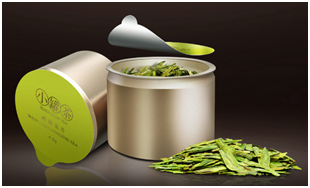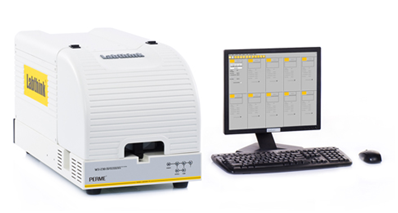Abstract: Tea needs to be stored and circulated in a dry environment. The content of water vapor is stricter on the outside. If the water vapor content is high, the tea is prone to deliquescence and mildew. In this paper , the W3/230 water vapor transmission rate test system independently developed by Labthink is used to test the water vapor transmission rate of tea aluminum can packaging, and introduces the parameters, application scope and testing process of the equipment, thus serving as a tea production enterprise. Monitoring aluminum can packaging provides a reference for the barrier performance of external water vapor.
Key words: tea, aluminum can packaging, water vapor transmission rate, moisture barrier, water vapor barrier, water vapor transmission rate test system
1 , meaning
Tea has been developed for more than 6,000 years, not only can be used, but also can improve human health, has now become a popular health tea. Because tea leaves are prone to deliquescence and mildew in high-humidity environment, tea production enterprises generally use high-barrier plastic composite film, aluminized composite film, aluminum-plastic composite film or iron can for packaging, along with the public tea industry and packaging industry. Development, and now gradually began to use aluminum cans vacuum nitrogen-filled packaging to make a can of one bubble packaging, so as to play a protective role on tea, so that tea is not easy to lose and the tea is not easy to deliquesce and mold.
If the tea aluminum can is packaged in a high-humidity environment, the moisture resistance is poor, that is, the water vapor transmission rate is too high, the tea leaves are prone to deliquescence and mildew, and the fragrance is lost in the storage and circulation, which not only affects the taste of the product but also reduces the taste. The shelf life of the product may even affect the brand image of the company. Therefore, the tea production enterprise should strengthen the monitoring of the moisture resistance of its aluminum can packaging.

Figure 1 tea aluminum can packaging
2 , testing standards
The domestic test method for water vapor transmission rate of container packaging is mainly infrared detection method, according to the national standard GB/T 31355-2014 "Package and container water vapor permeability test method infrared method sensor method", this standard specifies A test method for testing the water vapor permeability of packages and containers by infrared sensor method under steady state conditions.
3 , test samples
A small can of tea and aluminum cans used in a tea brand.
4 , test equipment
The test equipment used in this paper is the W3/230 water vapor transmission rate test system independently developed by Labthink .

Figure 2 W3/230 water vapor transmission rate test system
4.1 Test principle
The W3/230 uses the infrared sensor method to test the pre-treated sample between the test chambers. The nitrogen with stable relative humidity flows on one side of the film, and the dry nitrogen flows on the other side of the film. In the presence of a gradient, water vapor diffuses from the high-humidity side through the membrane to the low-humidity side; on the low-humidity side, the permeated water vapor is carried by the flowing dry nitrogen gas to the infrared sensor, which produces the same proportion of electrical signals as it enters the sensor. Analyze and calculate the electrical signal of the sensor to obtain parameters such as the water vapor transmission rate of the sample. For the packaging container, dry nitrogen flows in the container, and the outside of the container is in a high-humidity state.
4.2 Scope of application
(1) This equipment is suitable for testing the water vapor transmission rate of packaging materials such as film, sheet, paper, cardboard and composite materials, containers and the like.
The film includes various plastic film, paper-plastic composite film, aluminized film, aluminum foil, aluminum foil composite film, glass fiber aluminum foil paper composite film, etc.; sheet materials include various engineering plastics, rubber, building materials and other sheet materials, such as PP sheet, PVC sheet, PVDC sheet, etc.; paper, paperboard and composite materials including paper, cardboard, etc., such as cigarette coated aluminum paper, paper aluminum-plastic composite sheet, etc.; the equipment can also be extended for solar energy Water vapor transmission rate test for special packaging materials such as backboard, liquid crystal display film, medical blister, pharmaceutical plastic bottle, sterile protective film, automobile fuel tank, and battery plastic case.
The container class includes water vapor transmission rate test of bottles, bags, cans, boxes and barrels made of plastic, rubber, paper, paper-plastic composite, glass, metal, etc., such as tea aluminum cans, cola bottles, peanut oil barrels, milk Product packaging, vacuum packaging bags, metal packaging bags, metal three-piece cans, plastic cosmetic hose packaging, toothpaste hose packaging, jelly cups, etc.
(2) This device complies with GB/T 31355 , ISO 15106-2 , ASTM F1249 , GB/T 26253 , TAPPI T557 , JIS K7129 .
4.3 Equipment parameters
- The conventional test range of film samples is 0.01 ~ 40 g / m 2 · 24h , which can be extended to 0.1 ~ 1000 g / m 2 · 24h ; the test range of container samples is 0.0001 ~ 0.2 g / pkg · d .
- The test temperature range is 15 °C ~ 55 °C , the temperature control accuracy is ±0.1 °C ; the humidity range is 0%RH , 35%RH ~ 90%RH , 100%RH , and the humidity control accuracy is ±1%RH .
- The three test modes of artificial, proportional and cyclic provide suitable detection methods for materials with different barrier properties.
- The equipment is equipped with three test chambers, and the three test chambers can be designed independently. The test process does not interfere with each other, and the test results are displayed independently.
- Support Lystem TM laboratory data sharing system, unified management test results and test reports
5 , the test process
(1) Using a special instrument to punch holes in the bottom of the aluminum can, and apply it with a fast-solid glue around the small hole at the bottom of the aluminum can, so that it is fixed on the special test tray device of the instrument. After the sealing is completed, the pipeline will be used. It is attached to the instrument, and the sample and tray device are sealed and sealed with a sealed bag.
(2) Set parameters such as sample name, test temperature, test humidity, etc.
(3) Adjust the pressure of the nitrogen gas so that the humidity in the test chamber reaches the set value, and the nitrogen flow rate adjustment knob is used to make the nitrogen flow rate in the upper and lower chambers reach the standard value.
(4) Click the Start Test option and the test begins. The instrument automatically records the change of water molecule content on the low-humid side during the test, and calculates the end test results of Zui.
6 , test results
The water vapor transmission rate of the tea aluminum cans tested in this paper is: 0.0245 g / (m 2 · 24h) .
7 , conclusion
W3/230 water vapor transmission rate test system is a professional testing equipment for film, sheet and container to the external water vapor barrier performance. It has the advantages of high detection precision and good repeatability of test results. It can truly reflect tea aluminum can packaging. Water vapor transmission rate can effectively monitor the shelf life of tea. In addition to the detection of water vapor transmission rate, attention should also be paid to key items such as the overall sealing performance of the aluminum can packaging and the opening force of the film. Labthink has been committed to providing professional equipment and testing services to customers around the world, providing customers with a large number of packaging material performance data references . Labthink is looking forward to sharing and cooperating with users in various industries.
Extraction Kit Magnetics Bead Method
This standard specifies the terms and definitions, classification, technical requirements, test methods, identification, labels and instructions for use, packaging, transportation and storage of nucleic acid extraction kits (magnetic beads method) (hereinafter referred to as "kits"). This standard It is suitable for extracting and purifying human genomic nucleic acid and its fragments from various clinical samples such as serum, plasma, whole blood, cerebrospinal fluid, milk, saliva, urine, sputum, swab, tissue or paraffin-embedded tissue by magnetic bead method , Pathogen nucleic acid kit. Pathogen nucleic acid includes deoxyribonucleic acid (DNA), ribonucleic acid (RNA), etc. This standard does not apply to nucleic acid extraction reagents contained in closed systems that cannot extract nucleic acid extraction products for detection.
This kit uses magnetic beads with unique separation function and a unique buffer system to separate and purify high-quality virus from serum, plasma, lymph, cell-free body fluid, cell culture supernatant, urine or various virus preservation solutions DNA/RNA. The uniquely embedded magnetic beads have a strong affinity for nucleic acids under certain conditions, and when the conditions change, the magnetic beads release the adsorbed nucleic acids, which can achieve the purpose of rapid separation and purification of nucleic acids. The whole process is safe and convenient, and the extracted viral DNA/RNA has high yield, high purity, stable and reliable quality, and is especially suitable for automated extraction of high-throughput workstations. The nucleic acid purified by this kit can be applied to various routine operations, including RT-PCR, fluorescence quantitative PCR and other downstream experiments.
Nucleic Acid Lsolation Reagent Kits,Dna Purification Kit,Viral Rna Extraction Kits,Nucleic Acid Extraction Reagents
Jilin Sinoscience Technology Co. LTD , https://www.contoryinstruments.com